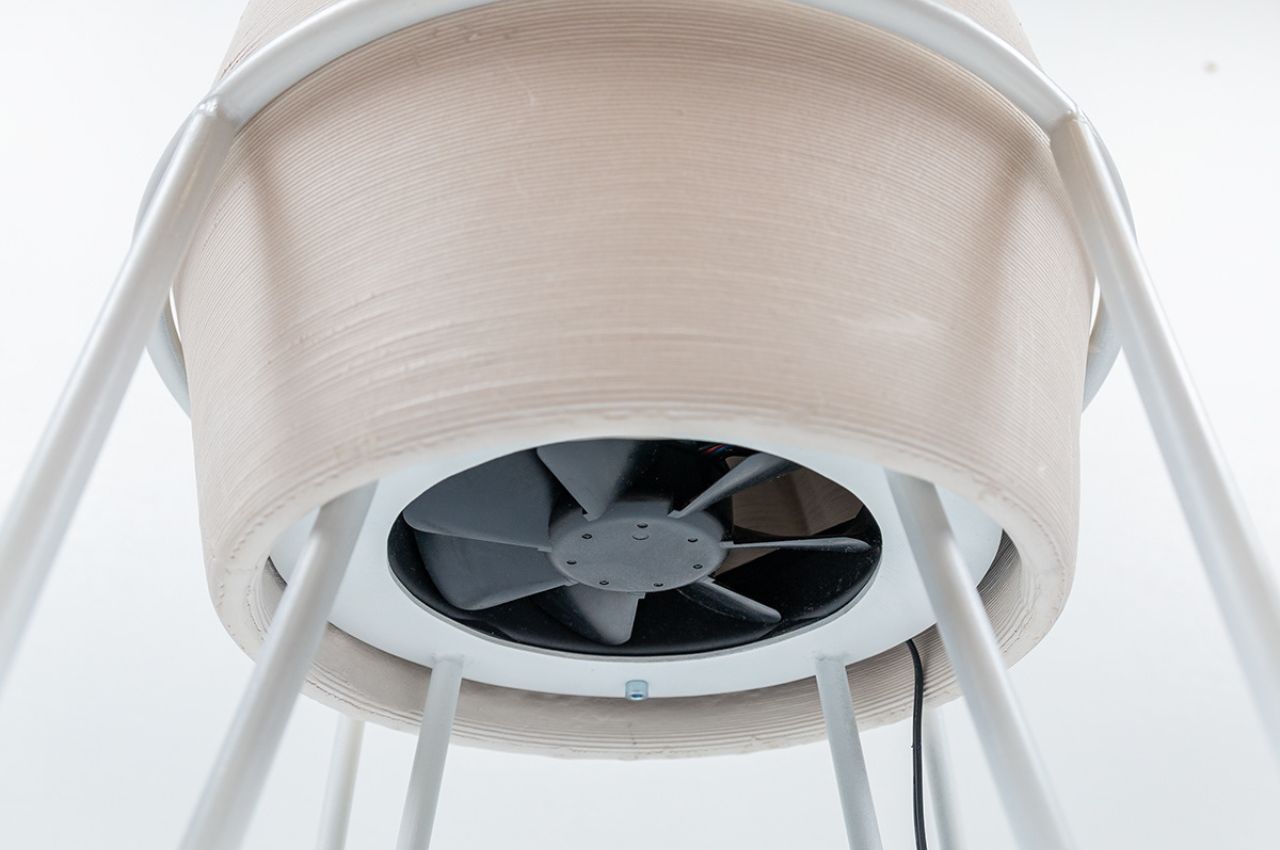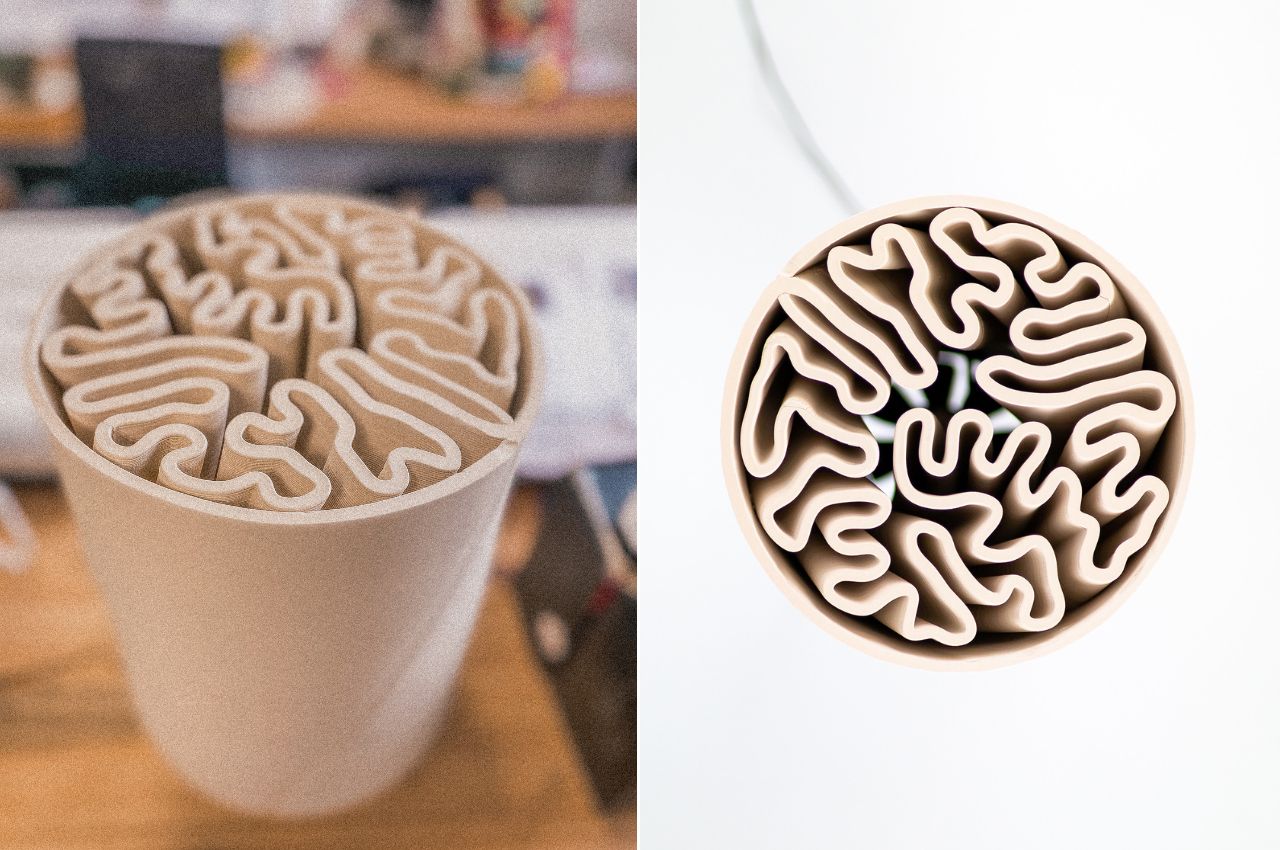
With the relentless increase in global temperatures, air conditioning has become an essential requirement for human survival, rather than a mere luxury. However, conventional air conditioning systems exacerbate the issue by contributing significantly to the carbon footprint. This calls for innovative designers to seek eco-friendly alternatives, blending traditional wisdom with modern resources to address this pressing challenge. In response to this need, the low-tech terracotta cooler emerges as a promising and sustainable cooling solution, born from the collaborative efforts of visionary designers and engineers.
Designer: Simon Pavy

The brainchild of a collaborative effort between a visionary designer and the global design agency Entreautre, the low-tech cooler draws inspiration from ancient practices. At its core lies a simple yet effective principle: a porous terracotta container filled with water. The ingenious idea of utilizing porous building materials for external walls is a common architectural practice in the Middle East and hotter regions of India. People of Egypt also used an evaporative cooling method by hanging wet reed mats over doorways and windows, these various natural inspirations form the basis of this innovative cooling solution. In these traditional designs, intricate geometric patterns not only lend a decorative touch but also play a pivotal role in creating a cooling effect. As warm air passes through narrow openings, it undergoes a cooling transformation due to the shift from high-pressure to low-pressure areas, enabling it to absorb heat effectively.
Central to the low-tech cooler’s functionality is a well-engineered ventilation system known as the Water Evaporative Evaporator Effect (WEEE). By allowing airflow to come into contact with the wet surface of the terracotta container, the water undergoes a natural evaporation process, producing a refreshing flow of cold air. This ingenious yet straightforward approach showcases the power of nature-inspired solutions in addressing modern challenges.


To achieve an optimal cooling effect, the designers sought to maximize the contact between the ventilated air and the wet terracotta surface. Embracing cutting-edge technology, they turned to ceramic 3D printing, which offered the unique ability to test complex volumes and experiment with differential growth. This process, mimicking nature’s organic growth patterns, not only enhanced the cooler’s performance but also bestowed it with an aesthetically pleasing design, becoming a manifesto of their vision.
In the pursuit of perfection, the design team relied on the powerful Grasshopper software, a visual 3D programming language linked to Rhino 3D. Though the software presented its challenges in terms of complexity, it proved to be an invaluable tool in creating intricate and parametric designs that would have been unachievable with traditional CAD programs. The dedication of the designers to master this software reflects their commitment to pushing the boundaries of creativity and innovation.
As with any ambitious project, the path to success was not without its challenges. The team had to navigate multiple constraints, including selecting the optimal material thickness, porosity, and method of conception. Collaboration with experts in mechanical engineering and Fablab’s CEO was pivotal in finding solutions and guiding the team toward their ultimate goal.


For the actualization of their innovative design, the team employed a one-of-a-kind 3D printing machine designed by the renowned Dutch artist, Olivier Van Herpt. This unique machine, adapted for terracotta printing, operates similarly to traditional 3D plastic printers but extrudes terra-cotta as a thin filament layer by layer.
As the product undergoes rigorous testing, encompassing aspects of sealing, terracotta durability, airflow efficiency, and real-world performance in hot environments, the low-tech terracotta cooler holds the promise of revolutionizing cooling methods.
In the face of climate change and the escalating demand for cooling solutions, the low-tech terracotta cooler stands as a beacon of hope. By blending traditional wisdom with modern technology, visionary designers have created an eco-friendly alternative that embraces nature’s principles to provide cool comfort. As this innovative cooling solution enters the testing phase, its potential to mitigate the impact of conventional air conditioning systems and contribute to a sustainable future shines bright. The low-tech terracotta cooler is a reminder that harmony between tradition and innovation can indeed pave the way toward a greener and cooler world…

The post 3D printed Terracotta Cooler Gives a Modern yet Traditional Makeover to Air-Conditioning first appeared on Yanko Design.
from Yanko Design

0 Comments